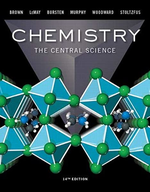Solution Found!
Indicate whether each of the following molecules is capable of geometrical isomerism
Chapter 24, Problem 24.33(choose chapter or problem)
Indicate whether each of the following molecules is capable of geometrical isomerism. For those that are, draw the structures:
(a) 1,1-dichloro-1-butene,
(b) 2,4-dichloro-2-butene,
(c) 1,4-dichlorobenzene,
(d) 4,4-dimethyl-2-pentyne.
Questions & Answers
QUESTION:
Indicate whether each of the following molecules is capable of geometrical isomerism. For those that are, draw the structures:
(a) 1,1-dichloro-1-butene,
(b) 2,4-dichloro-2-butene,
(c) 1,4-dichlorobenzene,
(d) 4,4-dimethyl-2-pentyne.
ANSWER:Step 1 of 5
Geometrical isomerism is a type of stereoisomerism that arises when two or more compounds have the same molecular formula, but differ in the relative orientation of their atoms in space due to the presence of a double bond, a ring structure or other constraints.
In such compounds, the atoms can be arranged in different ways with respect to each other, leading to different physical and chemical properties.
Our question is to indicate whether each of the following molecules is capable of geometrical isomerism. For those that are, draw the structures:
(a) 1,1-dichloro-1-butene,
(b) 2,4-dichloro-2-butene,
(c) 1,4-dichlorobenzene,
(d) 4,4-dimethyl-2-pentyne.
